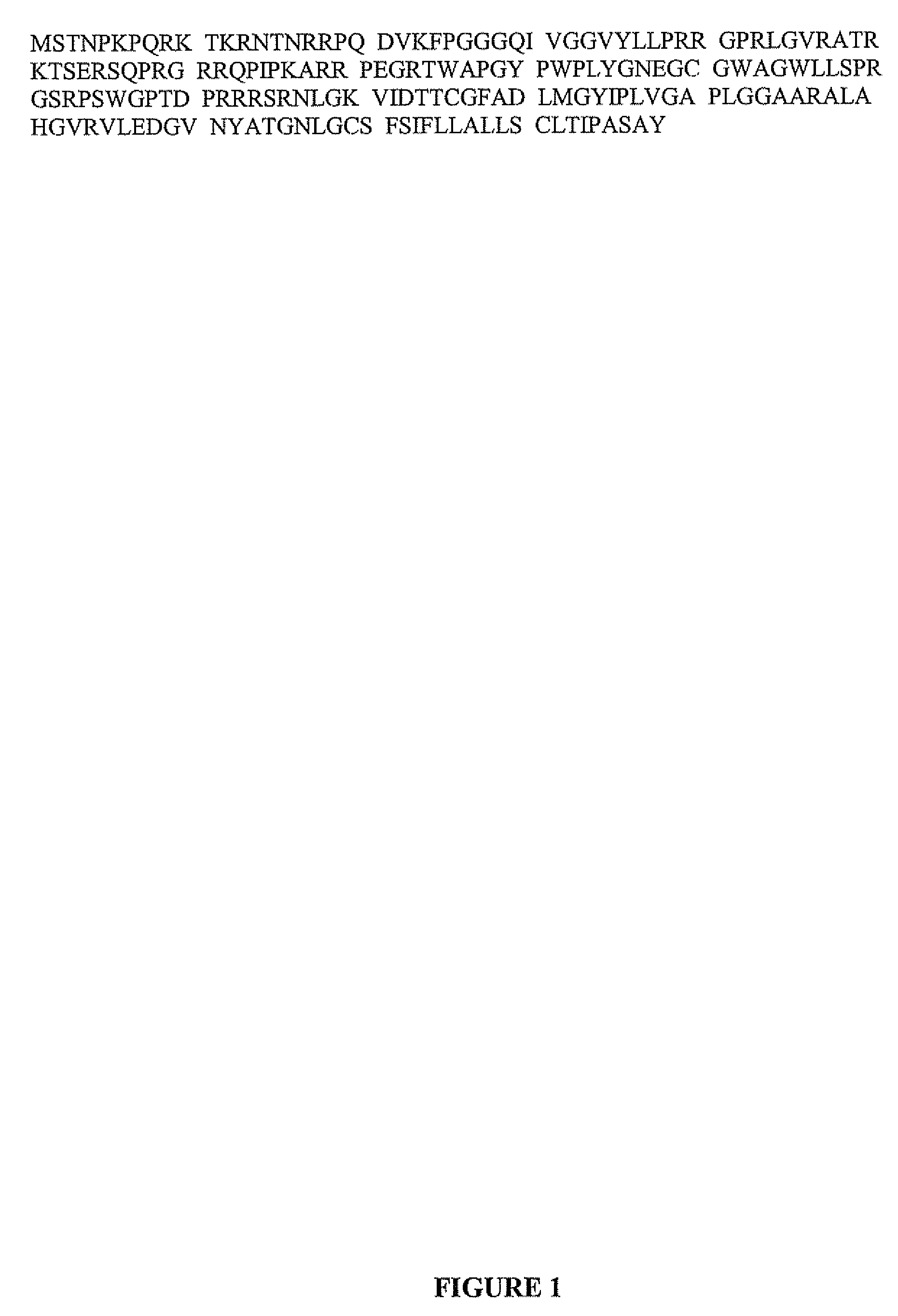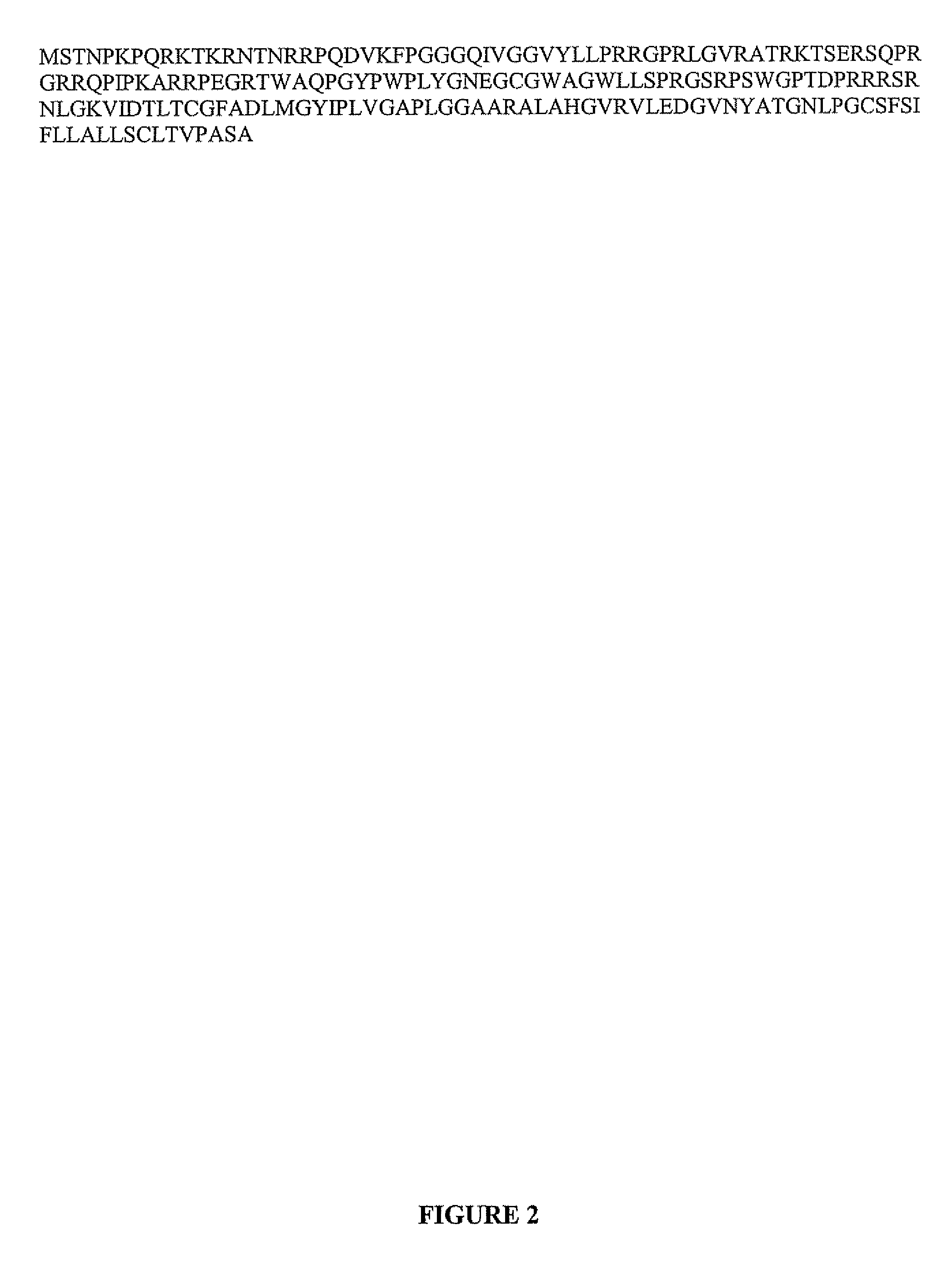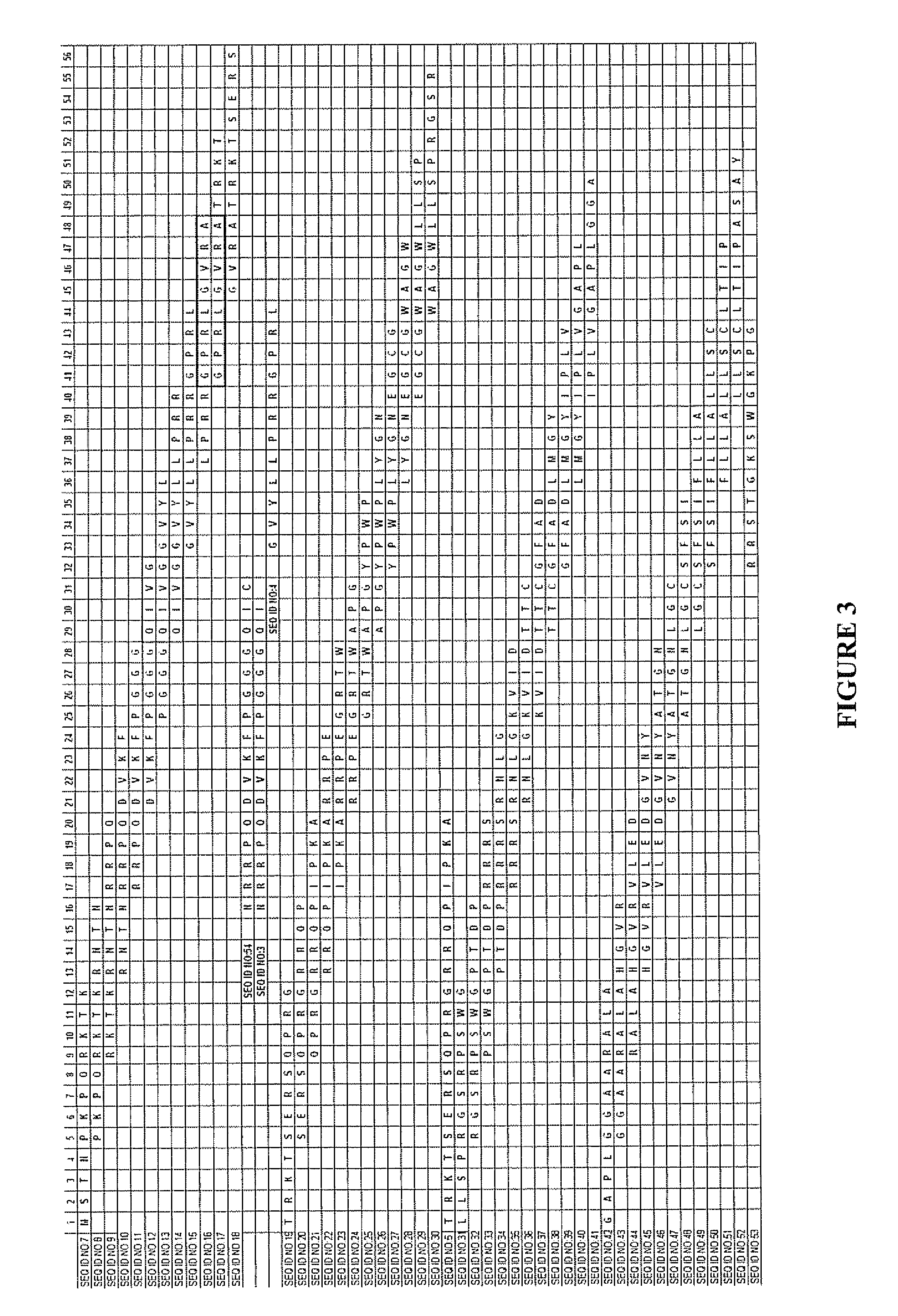Combination hepatitis c virus antigen and antibody detection method
a technology of hepatitis c virus and antigen, applied in the field of viral detection, can solve the problems of prone to handling errors, inability to the day period cannot determine whether hcv infection has occurred,
- Summary
- Abstract
- Description
- Claims
- Application Information
AI Technical Summary
Benefits of technology
Problems solved by technology
Method used
Image
Examples
example 1
Selection of Immunodominant Core Peptides and Anti-Core Antibodies
[0134]A series of peptides (SEQ ID NOS:7-53) were prepared that represent overlapping fragments of core protein. Each peptide was 12 amino acids in length and overlapped with the preceding (N-terminal) peptide by 8 amino acids and the subsequent (C-terminal) peptide by 8 amino acids (see FIG. 3). These peptides were conjugated to BSA and coated onto microtiter plates and screened against real human positive sera in an anti-human format to map the key antigenic regions of the protein. The same plates were used in an anti-mouse format to identify the binding sites of selected monoclonal antibodies used.
[0135]The following immunodominant peptides were prepared based on the results of this screening process
Core capture peptide 1:NRRPQDVKFPGGGQIC.[SEQ ID NO:54]
[0136]Core capture peptide 1 has an amino acid sequence corresponding to residues 16 to 30 of the core protein sequence shown in FIG. 1 [SEQ ID NO: 1] and is modifie...
example 2
Preparation and Labeling of Recombinant NS3 Antigen
[0148]A conjugate of recombinant hepatitis C virus (HCV) non-structural protein NS3 and horseradish peroxidase (HRP) was prepared as follows. This method is the subject of a patent application entitled “Antigenic Protein Conjugates and Process for Preparing Same”, filed Sep. 1, 2006 as U.S. Patent Application No. 60 / 841,801 (incorporated by reference for its teachings regarding same).
[0149]The recombinant NS3 (rNS3) was prepared according to standard protein expression methods and comprised the native sequence of NS3 together with a leader sequence from the vector at a position N-terminal to the native sequence.
[0150]An HRP-maleimide solution was prepared as follows, A 2-fold molar excess of sulpho-SMCC was dissolved in DMSO (Pierce) and added to 100 mg / mL HRP dissolved in 25 mM HEPES / 1 mM EDTA, pH 7.8. The solution was swirled gently and left for 45 minutes at room temperature. The HRP-maleimide was purified by gel filtration by lo...
example 3
Immunoassay Immunoassay Kit for Hepatitis C Virus Detection
[0153]This example describes an exemplary immunoassay kit containing reagents that are suitable for use in the combination method of the present invention and their preparation for use. The immunoassay kit comprises the immunodominant peptides and monoclonal antibodies described in Example 1 and the recombinant NS3 antigen described in Example 2. The format of the assay conducted using the kit is shown schematically in FIG. 5. The “polycore peptide conjugate” shown in FIG. 5 comprises the three core peptides conjugated to bovine serum albumin (BSA) to improve binding and presentation of the peptides on the solid surface. Appropriate storage conditions for all reagents are 2 to 8° C., unless otherwise stated.
1. Coated Wells
[0154]The kit includes coated wells (e.g., microtiter plates) which a restored in a foil bag. One plate or five plates, each plate of 96 wells, is coated with purified recombinant HCV NS3 antigen, peptides ...
PUM
| Property | Measurement | Unit |
|---|---|---|
| Volume | aaaaa | aaaaa |
| Volume | aaaaa | aaaaa |
| Fraction | aaaaa | aaaaa |
Abstract
Description
Claims
Application Information
 Login to View More
Login to View More - R&D
- Intellectual Property
- Life Sciences
- Materials
- Tech Scout
- Unparalleled Data Quality
- Higher Quality Content
- 60% Fewer Hallucinations
Browse by: Latest US Patents, China's latest patents, Technical Efficacy Thesaurus, Application Domain, Technology Topic, Popular Technical Reports.
© 2025 PatSnap. All rights reserved.Legal|Privacy policy|Modern Slavery Act Transparency Statement|Sitemap|About US| Contact US: help@patsnap.com



